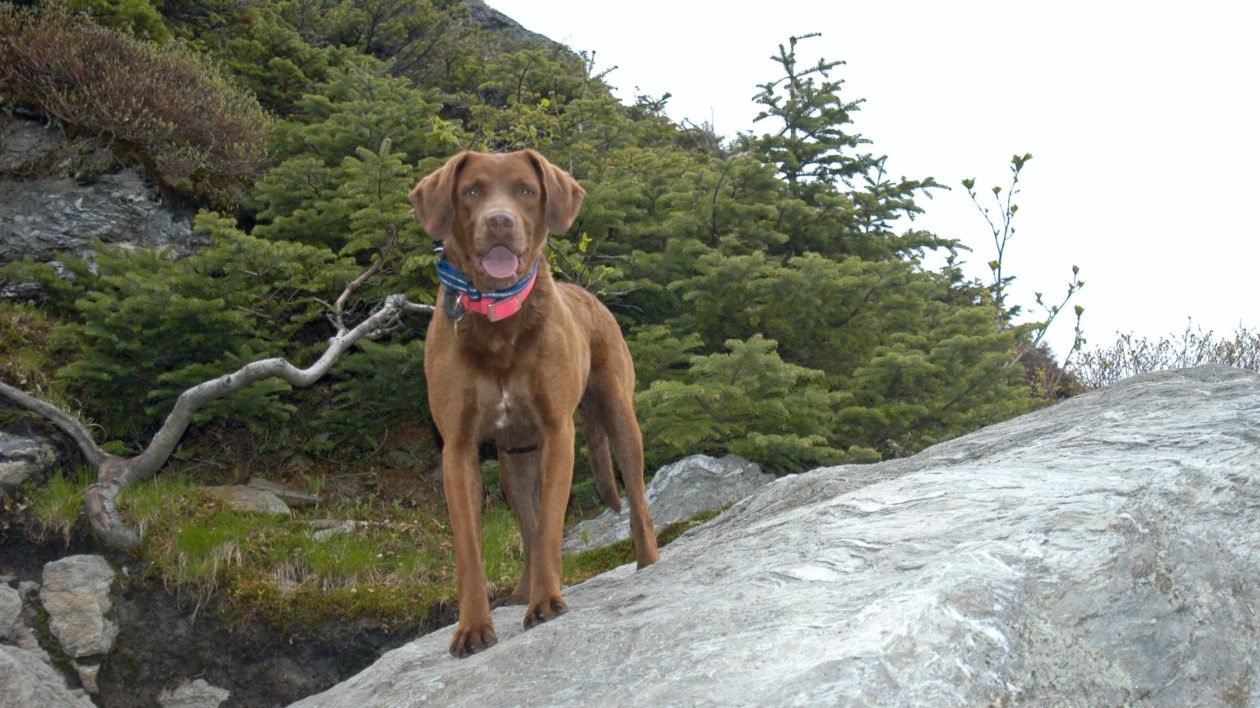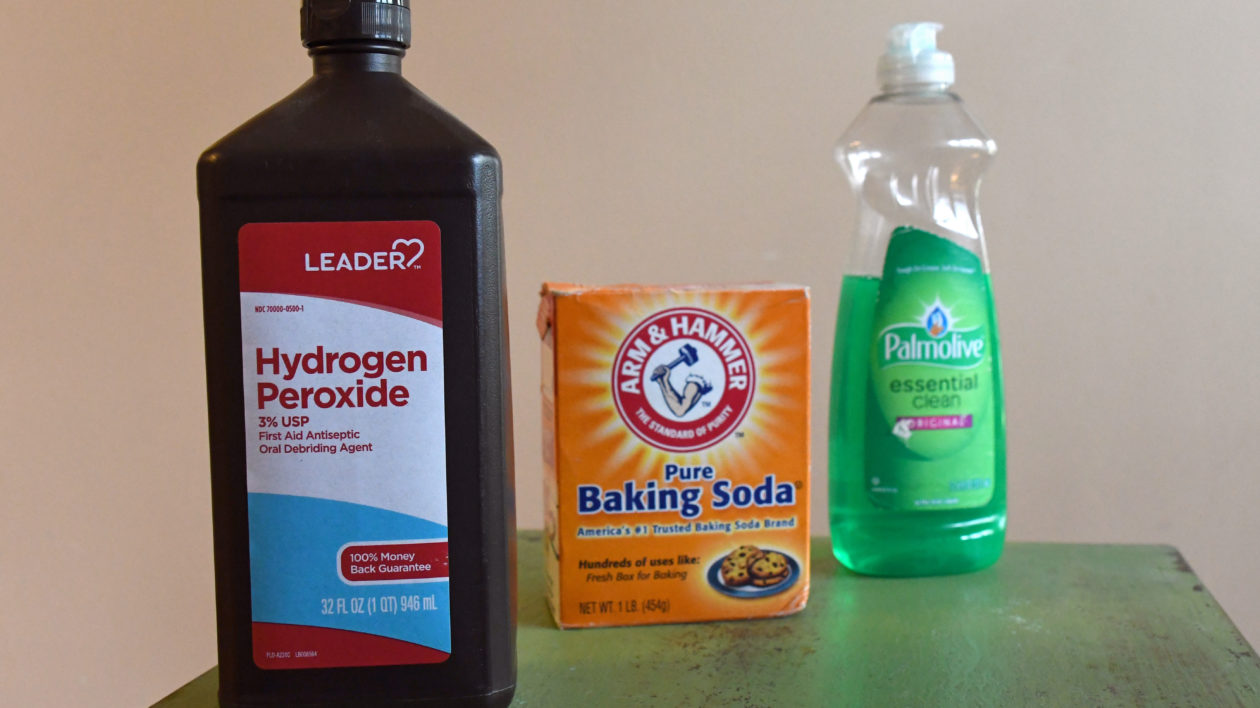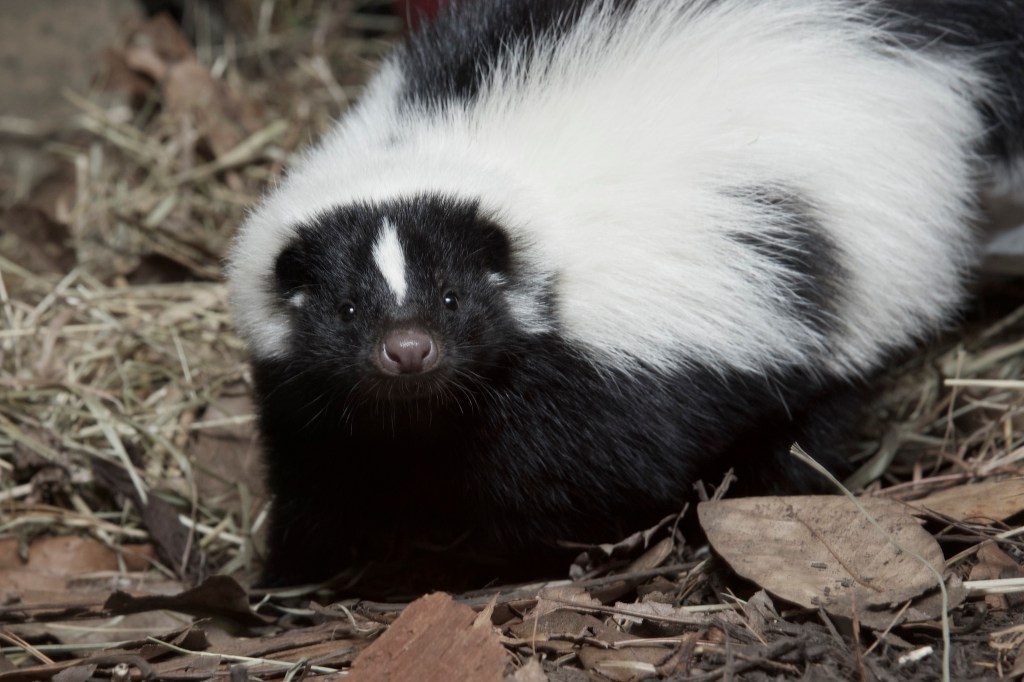The stench! I knew what happened as soon as I turned into my driveway. The foul odor made me gag before I even opened the car door.
“Not another skunk,” I moaned, seeing my retriever, Bravo, happily wagging his tail inside his kennel as he watched me approach. But the scent was a giveaway. There had been another visitor.
The smelly situation was becoming predictable. I leave town for a night. Our neighbor slides Bravo’s kibble and water inside his kennel. While Bravo snoozes inside his doghouse, a skunk sneaks under the fence after dark and starts eating the leftovers. Bravo nails the skunk, but not before the little stinker lifts its tail.
Many dog owners face this situation.
The Secret of the Scent
A skunk stores its pungent spray, its main method of defense, in two nipple-shaped glands along its anus, which is why it lifts its tail to do its stinky deed.
If the skunk sees the intruder, it can direct the spray with pinpoint accuracy. Otherwise, it sends out a nasty 10-foot cloud, hoping the purported predator runs into it.
Soon, the stink wafts much further than that, up to a couple of miles, which you’ve probably noticed while driving your car. When a skunk sprays near a highway or becomes roadkill, squishing out its offensive spray, you might see it then smell it, or vice versa, depending on the wind direction.
The spray itself is an oily liquid made up of sulfurous compounds called thiols. A skunk can spray thiols from birth, but unless it’s surprised, it usually gives a warning, such as stamping its feet, hissing or flicking its tail, because it’s only got one big shot.
After spraying, a skunk needs to recharge for a few days before it squirts again, so any spray has to count.
One creature immune to a skunk’s blast is the great horned owl, which has an underdeveloped sense of smell and preys on skunks from above rather than from behind.
Dogs are not immune to the scent but sometimes it can seem that way. Bravo can somehow defend his food despite a direct hit every time.

Forget the Tomato Juice
On the bright side, skunk spray won’t cause any lasting damage to a dog, though a close hit to its face can cause temporary blindness. However, nothing stinks like a pet that has found the back end of a skunk. The trick to getting rid of the sickening stench is neutralizing the oily thiols.
Throwing your dog in the closest pond makes it worse for the same reason that the odor can come back months later when your dog gets wet. Thiols are a sulfur-based compound which reactivate with water.
It’s folklore that washing your canine with tomato juice gets rid of pungent pong. It doesn’t. The carotenoids and lycopene in the juice, which combine with sulfur, and in theory, neutralize skunk smell, aren’t present is great enough quantities to break down the thiols.
At best, you temporarily mask the icky odor with something that sniffs of rotten eggs garnished with tomatoes.
Beer and oatmeal, two other common home remedies, don’t cut it either, because the only way to neutralize the thiols is to chemically change them.

Here’s A Recipe That Works:
- 1 qt. 3% hydrogen peroxide
- ¼ c. Baking soda
- 1 t. Dish detergent
Mix all three ingredients together then, wearing rubber gloves, shampoo the mixture into your pet’s fur and around its claws. Let it sit for only five minutes. Rinse your dog with tap water. The hydrogen peroxide and baking soda get rid of the smell. The dish detergent removes the oil. Note: The mixture won’t keep, so make it only when you need it. Afterward, shampoo your dog normally so it smells like its old self again.
If your dog gets sprayed in the eyes, rinse its eyes with distilled water, or ask your veterinarian for dog-friendly eye wash.
A skunk’s offensive odor is technically called musk. Other animals, including weasels, muskrats, polecats and badgers, spray musk for self-defense and to mark territory, but those smells are tame compared to a skunk’s.
Or maybe you’re the lucky one in a thousand whose nose doesn’t pick up musk. I’m not, but I no longer fear returning home to find my dog doused in it again. Because now, I take him with me. If he happens to meet another little stinker, I know what to do.




Really appreciated the article. Good information presented with a nice dash of humor. thanks, Lisa!
Worked great!! Would recommend this. A lot easier than tomatoe juice.
As a groomer and owner of a shop with DIY dog washing tubs, I have used this formula effectively for 20 + years. The only correction I would make is: don’t rinse after 5 minutes. Use your own nose and hands to detect where the spray has penetrated the dog’s coat (it’s usually on the front in a direct hit situation – the face, head, chest and front legs.) Apply the mixture to saturate these spots. Then use a spray bottle to mist the rest of the dog – surface areas that get some blow-back. But most important is, DON’T wash or rinse until the coat is DRY. Then bathe the dog. Once the treated coat is dry, you will be able to detect areas you missed. There are always some! Once the dog is dry you shouldn’t smell any more skunk! Then you can bathe the dog. Leaving the mixture on the coat until dog is dry won’t hurt the dog. But if you get him wet and there are any missed areas, the thiols will keep being activated whenever he gets wet – for a long time to come!
I’ve picked up a pet (de-scented) skunk and they are heavy! (They’re Mustelids, kin to Wolverines) Picking one up by the tail would likely result in breaking the tail under the animal’s weight and the skunk thrashing to get footing, claws out and damaging. If it does get the back feet planted on something, like your leg, it can spray. When moving a live-trapped skunk, wrap the whole trap in a plastic tarp to contain spray. The skunk is slightly less likely to spray in a small enclosed space, depending on how scared it gets. You may need to throw the tarp away after.
How do u get skunk smell out of an adult walker wheels?
What a gorgeous man dog Bravo is! ❤️
Don’t forget to tell your nice neighbor, Thank you for the experience of the whole bath scene. He or she owes you for all the ingredients.
Up to now – have only had one dog hit with skunk spray – he was a hound/shepherd mix & a hunter (on his own). It appeared he had his nose below the “squirter” – got hit on the back of his neck. Its been so many years – 25 or so – dont remember what I used. Likely tomato juice. The 2 dogs since & my present boy have so far been very fortunate – or lucky!
Honest she didn’t know that the hissing black and white “kitty” waving its tail would spray her, really she didn’t. My dog, Lacieanniegirl didn’t have any experience with skunks, they don’t live where we do. We were visiting my sister and family for Christmas and she chased that foul smelling critter. Off to the vet I went on the day after Christmas for help…. poor Lacey was quarantined to the back part of the garage out of olfactory range. After a shampooing with skunk degunker and normal dog shampoo she was ready and willing to roll happily in the mud, dirt, grass, leaves to her heart’s content……ohhh being a pet parent is challenging… Laceyanniergirl did stay away from the skunks, she was smart, she learned quick. Laceyanniegirl, February 2002 -August 2019. My girl.
This stuff really works, BUT you have to saturate the areas that got a direct hit! And I always counsel leaving it on longer than 5 minutes. And you don’t need rubber gloves. You want to be able to feel that the solution has penetrated to the skin. In my experience (50 years of professional grooming ) it’s the front of the dog that usually takes the most direct spray. For a long haired dog in skunk territory, I’d keep 3 or 4 qts of peroxide on hand and a big box of baking soda. If the front feet get hit, pour some solution into a plastic glass about as high as the dog’s leg and stand him in it, one leg at a time, letting it soak through. Use a sponge around the eyes and mouth. And the Bausch & Lomb advanced relief eye wash is perfect for dogs eyes. Use it liberally to sluice away spray in the eyes, until no more redness. Finally, for short dogs and those who didn’t get a direct point blank hit, put some solution in a spray bottle and spray the coat and let it soak in and dry. You definitely want to follow up with a good shampoo, but wait until you are sure you’ve neutralized the odor. If you get the dog wet with water, you will undo all the benefit.
Good to know in a pinch.
Thanks
How to pick up skunk without being sprayed?
Not sure why one would want to do this but a skunk can be safely picked up if you do so by the tail before it raises said tail. The weight of the hanging skunk prevents the skunk from raising its tail vertically above its body and then it can no longer spray. (Thanks for this insight to [now deceased] Richard Van Gelder, a mammalogist at AMNH, who presented this information in an entertaining talk in the 1970s. I put this information to a thankfully successful test at that time.) This is the reason skunks don’t spray when caught in a small (e.g., squirrel) live trap for removal to a new neighborhood.